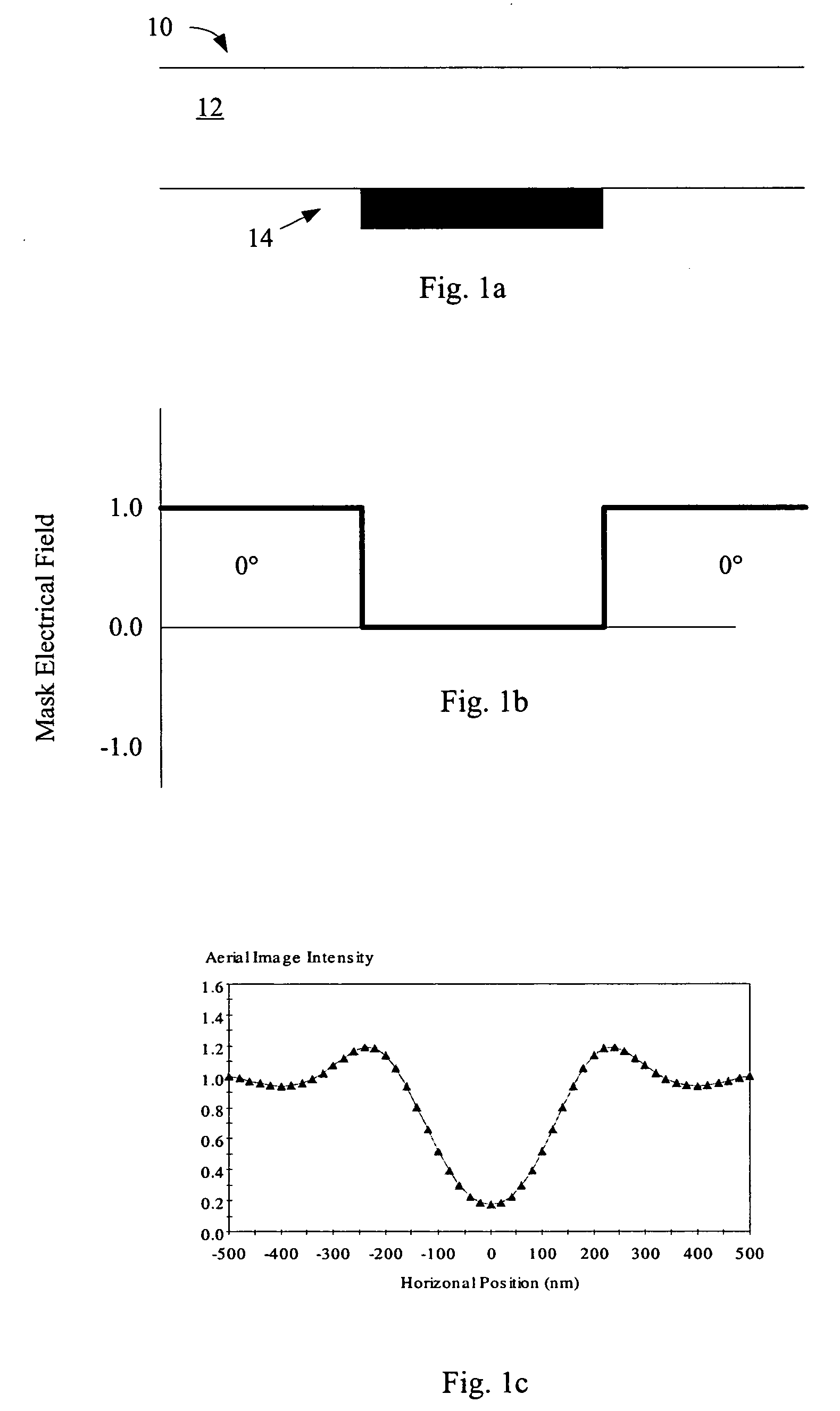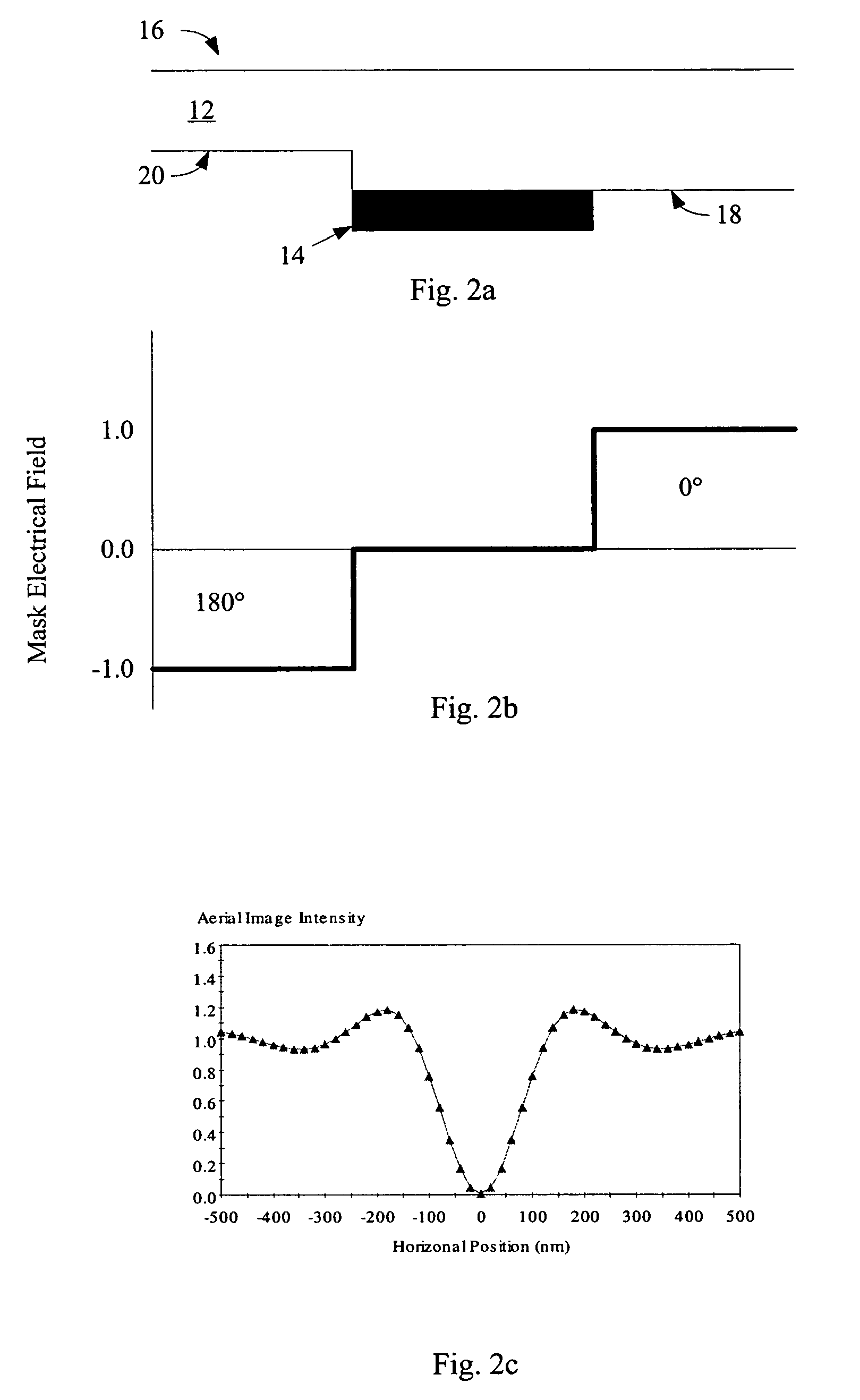Photomask features with interior nonprinting window using alternating phase shifting
a technology of alternating phase shifting and photomasks, which is applied in the direction of photomechanical devices, relative volume flow measurements, instruments, etc., can solve the problems of reducing the resolution of the image, reducing the accuracy of the image,
- Summary
- Abstract
- Description
- Claims
- Application Information
AI Technical Summary
Benefits of technology
Problems solved by technology
Method used
Image
Examples
Embodiment Construction
[0037]As described earlier, as part of the process of forming patterned features on an integrated circuit, light is projected through a photomask onto a photoresist surface. A feature in a mask is projected onto photoresist, then the photoresist feature is used to etch a feature in an underlying material, or in multiple layers of materials.
[0038]In this description, a masked feature will refer to a feature in a photomask. Such a feature may be a line, a rectangle, or any other shape. A masked feature in a photomask substantially entirely or partially obscures light, so that when light is projected through the photomask, a corresponding feature in the photoresist is shielded from light, while the area outside of the obscured area is exposed. This corresponding feature in photoresist will be called a projected photoresist feature. The projected photoresist feature will be roughly the same shape as the masked feature, though corners on projected photoresist features tend to be rounded....
PUM
| Property | Measurement | Unit |
|---|---|---|
| wavelength | aaaaa | aaaaa |
| wavelength | aaaaa | aaaaa |
| wavelength | aaaaa | aaaaa |
Abstract
Description
Claims
Application Information
 Login to View More
Login to View More - R&D
- Intellectual Property
- Life Sciences
- Materials
- Tech Scout
- Unparalleled Data Quality
- Higher Quality Content
- 60% Fewer Hallucinations
Browse by: Latest US Patents, China's latest patents, Technical Efficacy Thesaurus, Application Domain, Technology Topic, Popular Technical Reports.
© 2025 PatSnap. All rights reserved.Legal|Privacy policy|Modern Slavery Act Transparency Statement|Sitemap|About US| Contact US: help@patsnap.com



